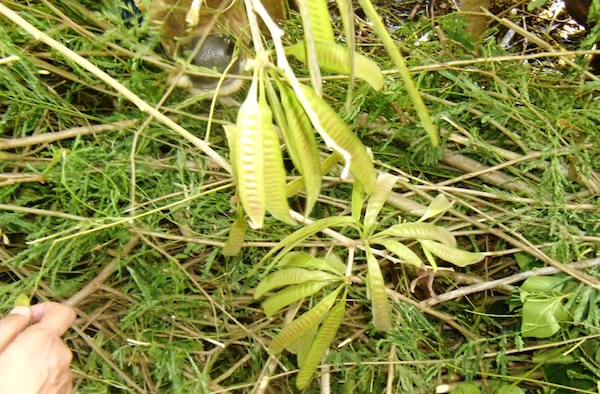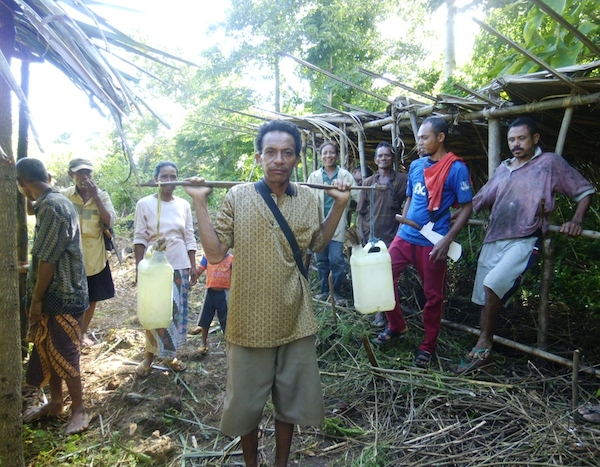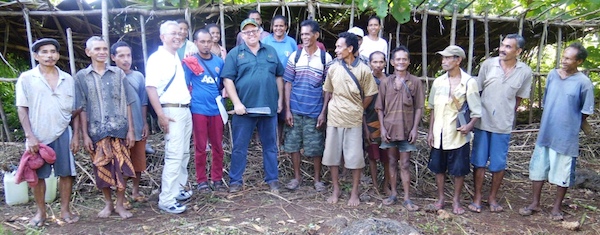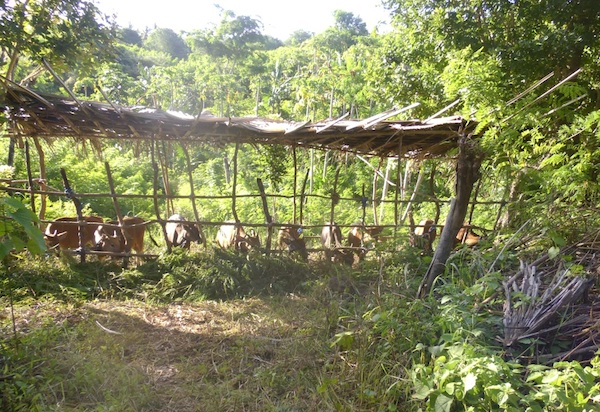CSR and our Kupang Cattle Micro Financing Project
Host: Lisa Wood/ AGP Indonesia
Written by Lisa Wood – Traceability Officer, AGP.
Today I want to tell you about another project we have on the go – Our Kupang Cattle Micro Financing Project. The city of Kupang is in Nusa Tenggara Timor (NTT). This is one of the poorest regions of Indonesia with limited opportunity for growth.
The island of NTT’s main activity is agriculture and is mainly comprised of subsistence level farmers. The average annual rainfall is 1550ml/year, mainly from December to March. By August, everything is very dry and dust fills the air. Sound familiar?
Unlike the north islands of Indonesia, NTT can only grow one crop per year. Here in Sumatra, it’s three crops per year. For the farmer, this means that there is very little margin for error. If the crop isn’t a success, it’s going to be a hungry year.
There is one plant that will grow throughout the year – the locals call it Lantoro, we call it Leucaena. This plant is the magic key that makes fattening cattle possible.
 Cut Lantoro being used as feed.
Cut Lantoro being used as feed.
In conjunction with local government (PUSKUD), we help with funding to purchase cattle for subsistence level farmers. The farmer fattens the steer, after which it is sold to help supply the growing demand for beef in Jakarta. Only steers are used for this project as all cattle sold are shipped to Jakarta and it is illegal to send productive heifers out of NTT.
During this fattening period, the farmer receives guidance and veterinary assistance from PUSKUD. After the sale of the fattened steer, the principle is either rolled over to purchase another cow or returned to us. The profit is split between PUSKUD and the local farmer with the majority going to the farmer. The return to PUSKUD is to cover the costs of veterinary medicines, travel, and administration.
The extra cash injection for the farmer means that they can pay for things otherwise out of reach, like schooling for their children; medicine if a family member is sick, or a wedding. Electricity supply is slowly making its way out through the island; some families have bought a meter so they can have electricity connected to their house.
Approx 40 million people in Indonesia only have a primary school education. I’d like to introduce you to one who has only been to kindergarten.
Aris is 14 and lives with his Uncle (actually, his mother’s cousin – Indonesian family connections can be complex). The two cows in the photo are the ones he looks after. As he is underage, the Agreement with PUSKUD is with his Uncle.
One of the rules of this project is that nobody is issued with more cattle than they can physically look after.
As the water supply is limited, getting water for the cows is a daily chore. The nearest river is four kilometres away. Each steer drinks about 20 litres of water each day. The farmer can carry about eight litres per load. For Aris, this means that he is getting more than enough physical activity in one day:
Two cows = 40 litres required ÷ eight litres/trip = 5 trips/day = 40kms per day.
And that’s just for the cows. His, and the family’s water needs, go on top of this effort. How many litres do you use for washing your body? Your clothes? Cooking?
 Pak Daniel demonstrating the water carrying method.
Pak Daniel demonstrating the water carrying method.
This water carrying method is used by all those with no bore access. In the afternoon the roads are lined with people, young and old, bringing water home.
Cattle are kept very differently here, not like Australia’s ‘free in the paddock method’. The fear of theft is very real, so cattle are kept in enclosures off the beaten track. On top of fetching water each day, the farmer will bring in bushels of feed they have cut.
It is due to this method of raising cattle, that the Indonesian cow has a very different temperament to the Aussie cow. They spend each day of their lives in close contact with their owners and have no fear of humans.
The other benefit for the farmers with this method is that they can work as a co-op. They will take care of their own particular steers, yet they will also work together to build the shelters and any other ‘all encompassing’ project they may have. It also provides them with assistance/community support should it be required.
While in Kupang, I met somebody who is from Flores. His parents are subsistence level farmers that have been involved in these types of cattle projects, which means they were able to put all three of their children through school. He was in Kupang for training for his new job and was very happy because now he would be able to help his parents so they do not need to work so hard anymore.
I really like the concept of this project as it is real assistance while enabling the farmers to keep their dignity. It is not a hand out, it is a hand up. As there are over 300 farmers involved, it has the potential to bring real benefits to the area as they each increase their resources and thus their standard of living.
 One of the groups of farmers involved in the project.
One of the groups of farmers involved in the project.
I am currently in the process of writing up a proposal to invite others to join with us in this project. The contribution we will be asking for is about $400, and this money is returned at the after two cycles of purchase and fattening period (about two years). If you would like more information, please contact me and I’ll put you on my mailing list to send the proposal when I’ve finished it.


